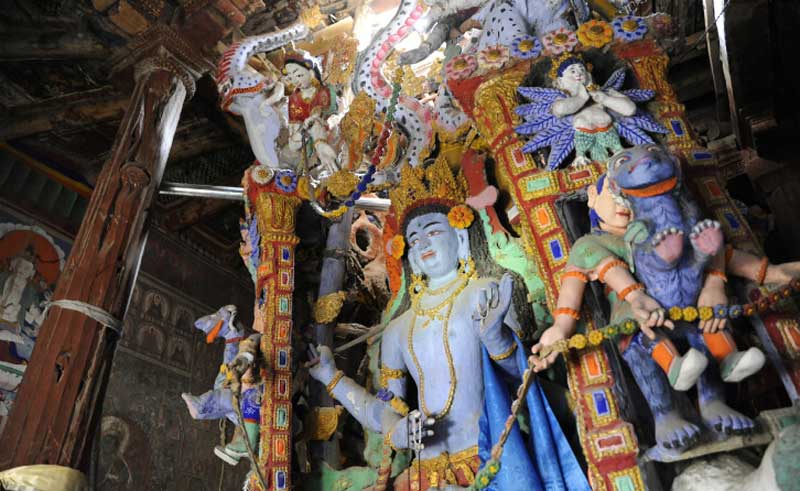
Located at an altitude of approximately 10, 170 feet (3,100 m) above sea level, along the bank of the roaring River Indus, the Alchi Monastery, regarded by the scholars as one of the oldest Buddhist learning centres in the Himalayan region, is a monastic complex, nestled in the idyllic Alchi Village, known for its distinctive design and craftsmanship. Traditionally, it is believed that the Alchi complex, situated in a green and tranquil landscapes, around 70 km to the west of Leh, the capital of Ladakh, was constructed between 958 and 1055 AD, by the famous Tibetan scholar and monk, Rinchen Zangpo, who is also credited with several significant contributions towards the spread of Buddhism in the region. However, inscriptions on several preserved monuments in the area attribute it to a later 11th century Tibetan noble, called Kal-dan Shes-rab. Interestingly, along with Alchi, two other adjoining villages, namely Mangyu and Sumda Chun, jointly constitute the famous Alchi group of monuments, known for its distinctive design, unique style, and excellent craftsmanship. The Alchi Monastery Complex comprises four separate settlements in the Alchi village, with monuments dating back to different time period, of which Alchi monastery is the oldest.
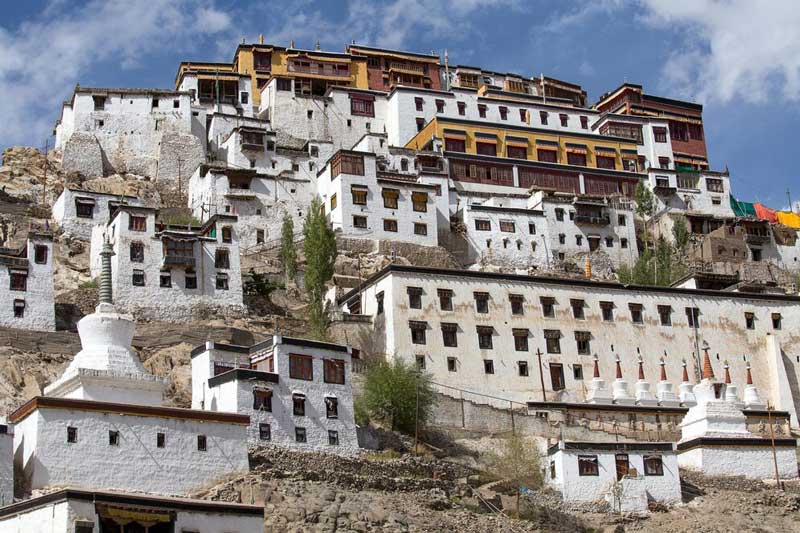
The Alchi Monastery complex comprises several structures, built in the Kashmiri style and designed with their own individual characteristics, which include the three major structures, namely the Dukhang, the Sumtsek and the Temple of Manjushree. In addition to that, the Alchi complex also contains two other important temples, known as the Lotsawa Lakhang, and the rather comparatively new temple, called the Lakhang Soma.
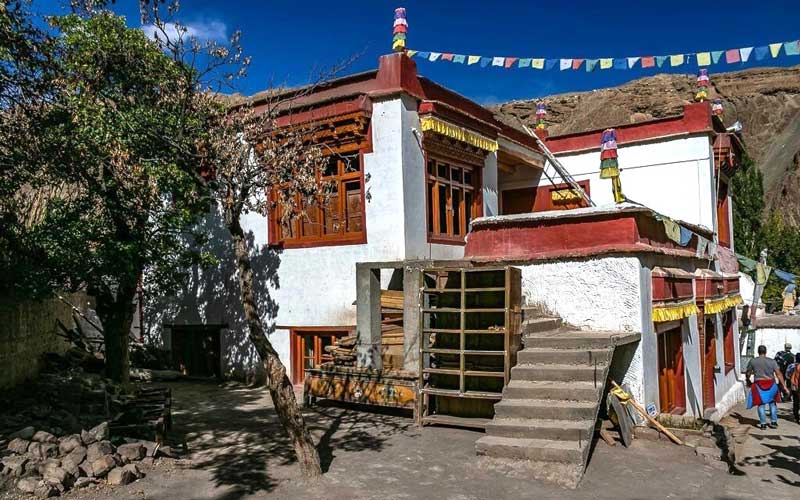
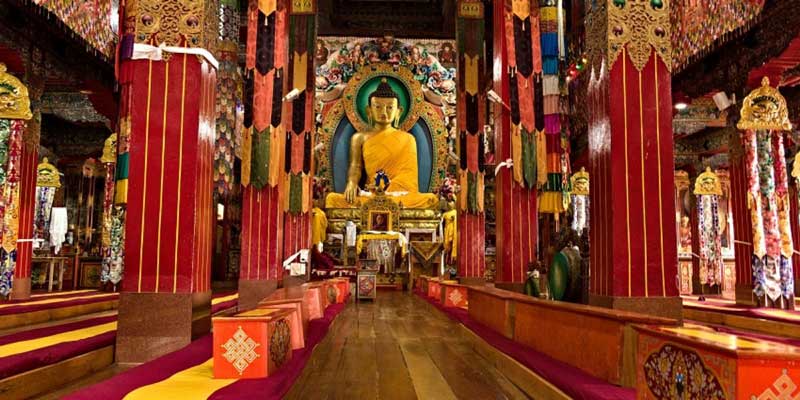
The Dukhang or the Assembly Hall, with its walls adorned with intricately carved paintings, is the largest and oldest preserved section of the Alchi monastery, used by the monks for worship and ceremonies. Regarded as the heart of the monastery, the Dukhang houses a huge statue of Gautama Buddha in the form of Vairochana, which is according to the Mahayana and Vajrayana Buddhism, the Shining Celestial Buddha, associated with the manifestation of light, while he walls of the hall are decorated with six different mandalas or symbolic diagrams representing the Panch Tathāgatas, a group of five celestial Buddhas, surrounding the main deity, Vairochana. The back wall of the Dukhang, displaying various Buddhist deities and figures, contains a sculptural configuration of a Vajradhātu Mandala Assembly, signifying the spiritual diamond realm, embodying ultimate truth in Mahayana philosophy.
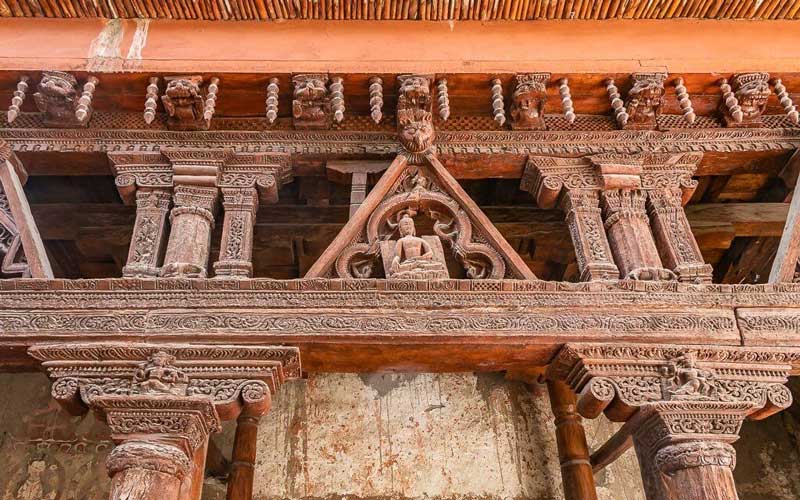
The Sumtseg, also known as the Zanchok Temple, a prominent three-story structure with intricate Kashmiri woodwork on the exterior, is one of the main temples within the Alchi Monastery complex, although its actual purpose is not very clear. Built in the early 13th century, and decorated with luxuriant woodwork columns, the Sumtseg is well preserved in its original form, except the main wooden door on the top floor, which is dilapidated. Interestingly, unlike the other Buddhist religious structures, it does not display the typical red and gold colour scheme. The sanctum in the ground floor of the building, measuring 18 feet (5.4 m) by 19 feet (5.8 m), with niches of around 8.9 feet (2.7 m) wide and 13 feet (4 m) high, each of which contains a superbly crafted image of a Bodhisattvas in standing posture of about 13 feet (4 m) high, along with 4 secondary deities and two flying goddesses in each niche. The second floor of Sumtseg, distinctively featuring a balcony with inbuilt lantern mounting, houses a gigantic image of Maitreya, measuring 15.2 feet (4.63 m) in height, one of the highest statues in Ladakh), flanked by the images of Avalokiteshwara to its right and Manjushri to its left. An interesting aspect of the graceful dhoties, a piece of fine textile tied around the waist and covering the lower part of the body, worn by the deities including Avalokiteshwara, Maitreya and Manjushri, displaying different themes printed on it. While the dhoti of Maitreya depicts the entire life cycle of Buddha, the dhoti of Avalokiteshwara illustrates all the holy places and royal palaces linked to Buddha, and the dhoti of Manjushri displays the images of 84 Mahasiddhas, representing a group of revered figures in Tibetan Buddhism.
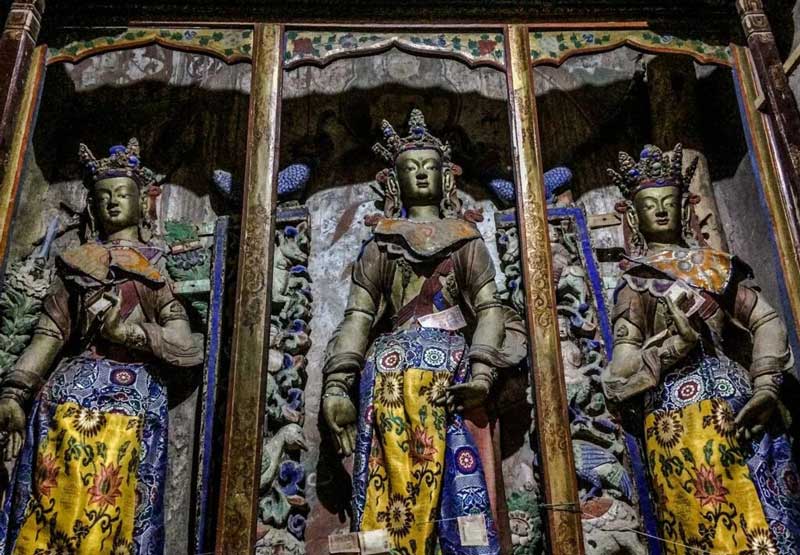
Located close to the Indus River, the Manjushree Temple is also known as Jampe Lhakhang. Said to date back to the 12th or 13th century, the temple was built around the four central images of Manjushri, seated back to back on a common platform, measuring 19 feet (5.7 m), and surrounded by four pillars, supported with cross bracing connected to the painted wood ceiling. Each of the four images of Manjushree, featuring a single head and four arms, is adorned with a sword, a book atop a lotus, a bow and an arrow. The main wall of the temple also displays the image of Manjushri, embellished with precious jewellery, and a crown made of a flower band, seated on a lion throne, the base of which displays the Seven Jewels and Eight Suspicious symbols of Buddhism, flanked by lions, and enclosed in a square frame.
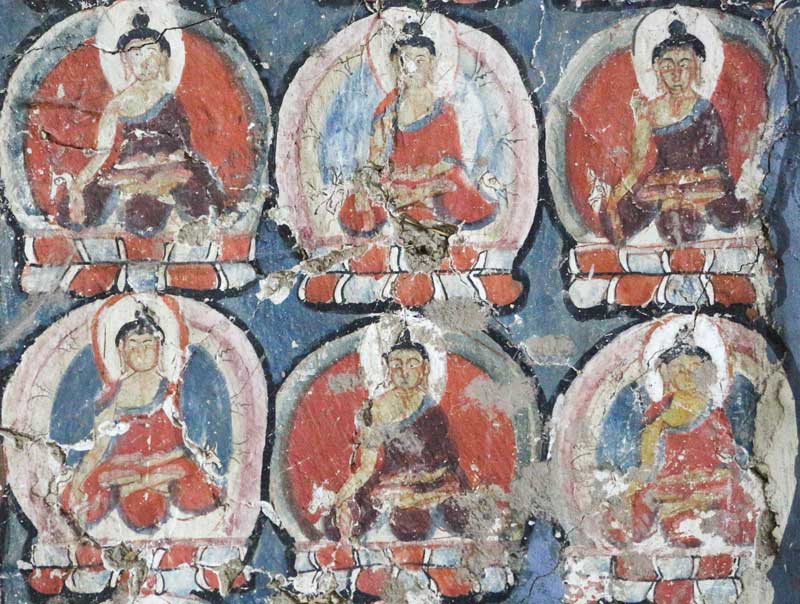
In addition to the above structures, two other important temples, namely the Lotsawa Lhakhang and the relatively new Lhakhang Soma, also constitute two significant parts of the Alchi complex. Standing on a small hill, Lotsawa Lhakhang, which literally stands for the temple of the great translator, was possibly dedicated to Rinchen Zangpo, the famous Tibetan scholar and a prominent translator during the second diffusion of Tibetan Buddhism. Believed to be built in the 13th or 14th century, the architectural features and wall paintings of the Lotsawa Lhakhang, featuring the intricate frescoes and carvings, including those of Manjushree, the Bodhisattva of wisdom, are similar to other temples in Alchi, which include the Tsatsapuri and the relatively new Lhakhang Soma.
